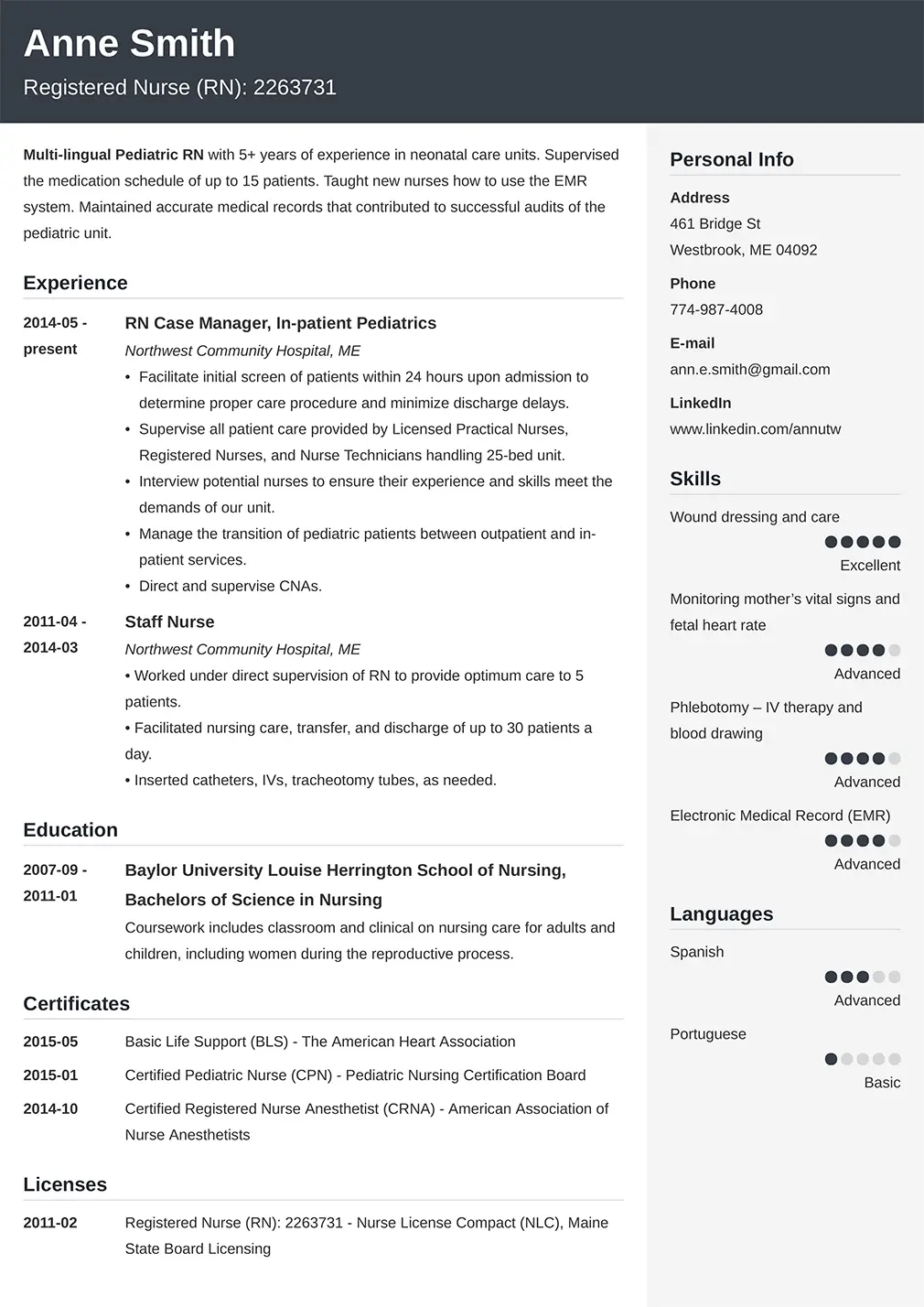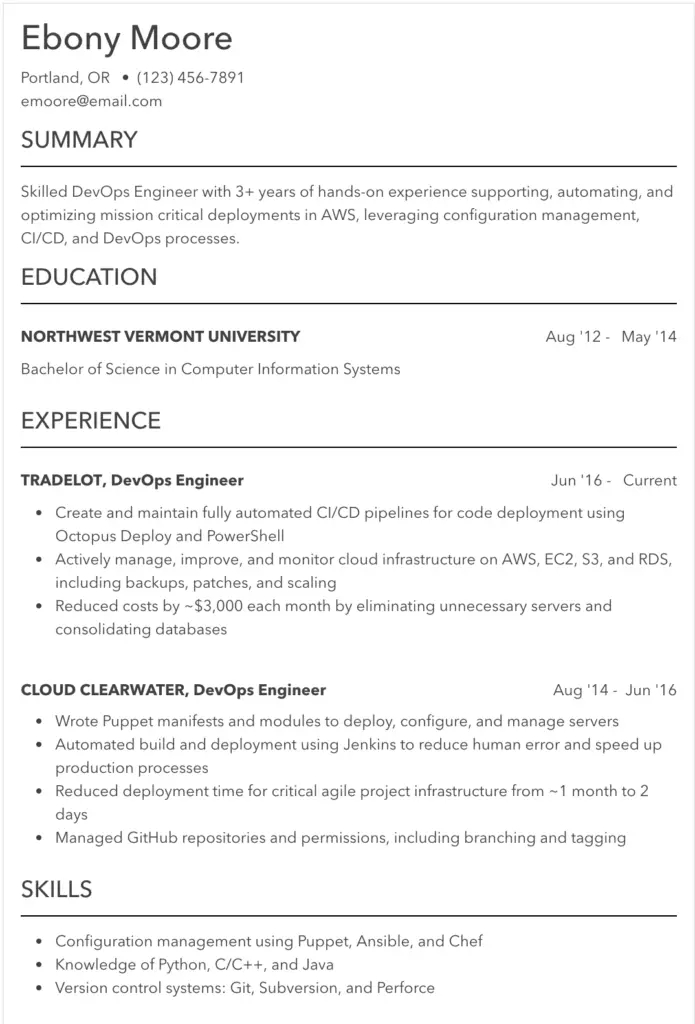Reverse Chronological Order on a Resume Explained

What is a reverse chronological resume? When you hear the term reverse chronological order, you might not comprehend what that means when considering your resume or job application assets.
Reverse chronological order is a system for ordering lists of data or lists of information by their date. Chronological, the inverse of reverse chronological order, is when data is sorted by their origin date, with the date furthest from the current date at the top of the list. This is then followed by other information blocks descending to the bottom of the list, which would conclude at an information block with the last item being closest to the current date.
Here’s an example of dates sorted in chronological order, assuming today’s date is February 1, 2020:
- November 2019
- December 2019
- January 2020
And here is an example of reverse chronological order, assuming today’s date is February 1, 2020:
- January 2020
- December 2019
- November 2019
As you can see, reverse chronological order is when the date nearest to today’s date is listed towards the top of the information list.
Let’s jump to understanding what it means for your resume and how you might be able to organize your resume information blocks in this data sorting manner.
Why Reverse Chronological Order is Best For Resumes
This ordering system is best for resumes because it indicates the most recent employment opportunity on behalf of the job seeker. For the employer, this provides easier comprehension opportunities.
Besides, this ordering system feels “more logical” to the reader as they begin to scan your work history or education history.
How to List Information in Reverse Chronological Order
When listing prior work history as part of your resume, you should be including the month and year of which you were employed by that organization.
Once you have your information blocks with month and year, you can organize them by their dates in reverse chronological order.
It’s okay to write your job history down in an unorganized, unordered fashion. But once you are finished writing your previous work history bullet points and job titles, be sure to organize your information blocks by their employment date, having your most recent employment date at the top of the list.
Ordering Work History and Education History
Reverse chronological order is best used for your work history as well as your education history. If you have certifications and are listing dates associated with those, be sure to list them in the same ordering system.
Making this your universal ordering system on the resume you present to employers will improve the overall readability of your resume. Making it easier for employers to comprehend your resume and personal or professional background.
When Reverse Chronological Shouldn’t Be Used
no circumstance would present an opportunity to use any other type of information ordering system. It would help if you always used reverse chronological ordering with your resume.
Examples of Resumes in Reverse Chronological Order
Below are resumes that have previous work history ordered in reverse chronological order. Note that their most recent employment is at the top of their “Work History” or “Previous Experience” resume section. With a descending work history ending up with their very first job in the professional's career at the bottom of the list.



Learn about other resume formats.
Resume FAQ
Common questions asked by job seekers regarding their resume format.
Why is the reverse chronological format the best resume format?
It's the easiest for hiring managers to understand your prior work experience. It lists work experience more fluidly and shows your experience in a linear fashion. This helps the hiring manager understand your professional experience and personal experience because it alludes to your motivation toward advancing yourself.
Should I use a chronological resume format for my functional resume?
No, a reverse chronological resume order is still great to use for functional resume needs.
Does a chronological resume format help me show my skills better?
No, it does not. Your skills are shown through your experience. The format you use isn't going to help allude to your skills or experience any more or less. You'll need to focus on explaining your experience with metrics, accomplishments, and more.
What if I have gaps in employment?
Gaps on your resume are normal. It would help if you still used a reverse chronological order resume to show your employment history and experience. Don't try to make a combination resume like some guides allude to. Just explain to your employer that you have gaps in your experience and explain the reason why.
Should I include my job title on chronological resumes?
These are best suited for curriculum vitae. But if you'd like, you can include your job title. It is our advice that you still with a reverse chronological resume format unless you are writing a CV.
Should I use a resume builder?
A resume builder can certainly help ensure that you are writing a reverse chronology resume in a way that speaks to your experience and speaks to the timeline of your work history. It can save you considerable amounts of time, and if you don't have years of experience writing resumes, it can help get you started.
Why is a chronological order resume and chronological format hard for a recruiter to read?
Think about a Facebook or a Twitter timeline. For example, on Twitter, they are always organized by the most recent activities, first. It is just a natural way for a recruiter to digest your information. It more clearly shows your career progression and the chronology of your experience.
Should I use a resume writing service?
It certainly can help. If you feel like you need a chronological timeline or a functional resume format, which isn't described in this writeup, a resume writing service can help to assess what your needs are based on your career, experience, and gaps in employment. They can help to determine the best format for the job.
Why is work experience so important to a recruiter?
Your work experience can help a recruiter feel more secure with your ability to perform on the job. There becomes a sense of social validation that occurs.
Do you have a resume template for a chronological resume?
We don't have a chronological resume template since they are more unique. But our resume template database is full of other jobs that might help you.
Popular Resources

Featured
35+ Phone Interview Questions & Best Sample Answers
Phone interviews have become a core part of the process when attempting to find a secured placement for an open position. Companies receive massive responses from potential candidates for any..

Featured
12+ Best Questions To Ask A Recruiter
Concerning a job search, you might receive numerous offers from your recruiters. Before you choose one, you need to assess all the conditions, for which it is vital that you know everything associated with the offered position..

Featured
Answering "What Makes You Unique" In A Job Interview
Answering this question during a job interview requires more than knowing why you are unique as an individual. Yes, the true scientific answer is made up of two main components: your..

Featured
250+ Ice Breaker Questions for Life
An ice breaker question is a question that’s asked from one person to another person in order to act as a conversation starter. It brings a connection...

Featured
10 Best Answers to "What Motivates You?"
Open-ended questions like “What motivates you?” can elicit a deer-in-the-headlights reaction from job candidates if they are unprepared. It’s a broad question and can leave the interviewer..

Featured
Answering "How Did You Hear About This Position" In An Interview
A lot of interviewers ask this question - how did you hear about this position? This way they can judge you if you are a passive or an active job seeker..

Featured
8 Best Thank You Emails After an Interview (Samples, Free Templates)
Writing a thank you note after an interview says a lot about you as a potential employee. Most notably, it says that you care about the opportunities presented..

Featured
Writing a Resignation Letter (How To Write It, Samples)
Writing the perfect letter of resignation is more of an art than it is a science. And we’re going to cover how to master that art form in this full guide..

Featured
How to End a Letter (Example Salutations, Sign Off's)
Knowing how to end a business note or email is an important skill to develop. It helps portray a sense of confidence, respect and tone to your message..
